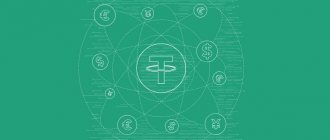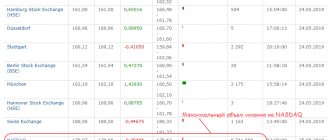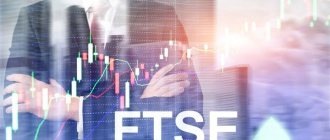Lazy Investor Blog > Stock Exchange
You've probably noticed that sometimes when morning trading begins, the stock exchange becomes feverish. Trading may open with a price gap (gap) from the previous day's close. How and why does this happen, what are premarket and postmarket, how can you make money on them? Let's talk about this today.
What is premarket and how does it work?
During the exchange’s working hours, participants use a full range of internal tools: behavioral markers, leverage, and different order formats. This amount of freedom led to the formation of a modern institution of exchange trading, with maximum liquidity and earnings on speculation.
The premarket operates according to different rules. Before the official start of trading, the system accepts preliminary limit orders and allows you to track the status of your own orders. As a rule, the allowed price range of a limit order is limited to the extreme values in the order book. After submitting your application, you need to wait until one of the other premarket participants puts forward an offer that meets your request. If such an offer is received, you will make a deal between yourself before bidding. Otherwise, the application will move to the main trading session while maintaining the specified limit.
To understand the premarket for US stocks, you need to remember that this is the most active global market with a stock exchange that is sensitive to the slightest fluctuations. The main purpose of the premarket is to determine prices at the opening of the main session. Automated trading systems do not affect market movements during this short period of time; transactions are concluded only between “live” participants. For most traders, this only means low liquidity, but these limited conditions can be used to achieve their goals - namely, making money on a price gap.
Chicago Board Options Exchange (CBOE)
The Chicago Board Options Exchange (CBOE) is the largest options exchange in the United States. The exchange was founded in 1973. Operated by CBOE Global Markets. The company's capitalization is $13.6 billion.
CBOE occupies one of the leading positions in a wide range of financial instruments: second place in terms of stock turnover (20% of the total volume) among market operators, the world's leading operator in options (30% of the US market), in foreign exchange transactions - 15% of the world volume, hosts approximately 12% of all US ETPs (280 products from more than 50 issuers).
CBOE operates four exchanges - BZX Exchange, BYX Exchange, EDGA Exchange and EDGX Exchange.
2,200 companies cooperate with the Exchange, and there are also 22 stock indices (including S&P, NASDAQ-100, Russell 2000, etc.) and 140 ETFs.
Exchange website: https://www.cboe.com/
Features of trading in the premarket
All market participants can participate in pre-market trading, but most platforms close the tools for working with pre-market and post-market for new users. Premarket is enabled in the settings for free, without any checks or additional conditions. The only reason for the existence of such restrictions is the high risks associated with the premarket. Inexperienced participants risk losing money quickly and not even understanding what happened.
Things to consider before submitting bids during the pre-trading period:
- Applications are collected almost until the opening of the exchange. The platform stops collecting orders under premarket conditions when there are 30 seconds left before the start of the main trading. This is used by “early bird” traders who submit orders in the premarket with an eye to the main session.
- Until the last minutes of the premarket, trading activity will be low, even on large platforms. The exception is major events (political scandals, currency fluctuations, etc.), but even in this case, be prepared for leisurely trading.
- During the pre-market and post-market, not all lots can be traded. Restrictions vary slightly from country to country. As a rule, they trade securities of large companies - it is difficult to find a buyer for small lots during non-working hours.
- In the event of an imbalance between supply and demand - and such situations arise constantly in the premarket - orders are executed in turn, from the most profitable offer for the other party to the less profitable offer. That is, when there are few orders to buy, they sell from minimum prices to increasing ones. This way you can get valuable assets at a price significantly lower than the market price - this phenomenon is called a “gap”.
- If the imbalance between offers is absolute - that is, among the premarket orders there are no offers that match the price - the premarket results will not be used to determine the price of the instrument at the beginning of trading.
- If there are no buy or sell orders for any shares during the pre-trading session, the pre-market will not have an impact on the formation of prices at the time the exchange opens.
Important! Pre-trading may not be available on holidays - please check US national holiday schedules.
If you need to quickly get rid of stocks, the stock exchange hours are over, and the holidays are ahead, do not rely on the usual pre-market schedule, use the post-market hours.
Will US stocks continue to fall in 2020?
A brief overview of the US stock market in 2021 at the end of January.
What's happening to the US stock market now?
Since the beginning of October 2021, the US stock market has been in a strong growth phase, which continued into 2021. On January 27, quotes collapsed and opened with a strong downward gap on news of the spread of coronavirus in China. But the situation with the epidemic did not upset investors for long; the gap at 30.01 is almost closed. The medium-term upward trend has not yet been broken.
S&P500 daily chart.
How likely is a collapse in American stock markets?
Many world experts and investors expect a crisis in the financial sector. Time will tell to what extent expectations will come true this year. Financial markets are pumped with liquidity to the detriment of the development of the production sector. According to analysts, almost all free cash flows are channeled into financial assets. This cannot continue indefinitely.
So far, trend indicators indicate a continuation of the upward long-term movement.
The fact of the US presidential elections in November 2021 opposes an immediate collapse of the stock market. In an election year, investors are unlikely to want to organize total sales, which could last at least a year. At least until the election date. Except for a possible, very serious force majeure event.
When is the American premarket open?
The trading session of the US market is longer than the Russian one and lasts as much as 16 hours - from four in the morning to eight in the evening. The American premarket also lasts longer: an hour and a half, from 8:00 to 9:30 North American Eastern Time (ET). Moreover, the entire period of off-market trading, including post-session transactions, is 5.5 hours.
This corresponds to an increased level of exchange activity, and also means that the US market remains the hub of the world for traders willing to take reactionary trades. For comparison: on the main market of the Moscow Exchange, only 10 minutes are allocated for the premarket before the start of trading.
You can view the trading and premarket schedule with translation to regional time on the website of any trading platform, or in an application that supports working with the American market.
What is considered to be the US stock market?
I will give a short list of US stock market instruments below. I will also consider stock exchanges and leading indices.
List of exchanges
I will indicate the leading US stock exchanges. Commodities (for example, CME) are not included in this list:
- NYSE. The first trading took place in 1817. The largest stock trading platform on the planet. Capitalization for spring 2021 is more than $23 trillion. Almost a quarter of the capitalization of all global stock assets.
- NASDAQ. Trading in assets of the IT sector and high technology companies. The first in history to completely switch to automated quotes since its founding in 1971.
- AMEX (American Stock Exchange). Like the first two, it is geographically located in New York. It is considered a regional platform. Since 2008, it has been listed on the New York Stock Exchange. Later it received the official name NYSE American.
List of indexes
There are dozens of items by capitalization and areas of activity. I will give the most popular ones that you need to pay attention to when assessing the US stock market.
S&P500 is the most common for assessing the US Federal Reserve. Calculated since 1957. There are 5,000 securities traded on the American stock market. 500 of them are included in the index. At the same time, they reflect 80% of the capitalization of the entire market.
The S&P500 includes shares of companies with the largest free-float weight of traded shares. The weight of each security by capitalization directly depends on its size when calculating the index.
List of shares included in the index.
The minimum volume of turnover per month of trading in the issuer's shares for inclusion in the index is 250 thousand.
Change schedule since 2015. The collapse of quotes in 2018 is clearly visible. More about this below in the article.
Top 10 stocks in the index as of 12/31/2019. Source - us.spindices.com.
DJIA - Dow Jones Index. Calculated since 1896. Includes shares of 30 top-notch companies. Unlike the S&P500, capitalization is not taken into account. The main parameter is trade turnover.
List of companies in the index:
The old-timer on the list is Exxon Mobil. Since 1928.
NASDAQ Composite. The calculation includes all companies listed on the NASDAQ exchange, >3000 shares. The initial value since calculation in 1971 is 100. Financial sector stocks are not included. Only high-tech companies.
Russell 2000 takes into account two thousand small and mid-cap companies in the US stock market. The stocks on the list are widely used for mutual fund investments.
Chart since 2010.
How to make money on the American premarket
Most market participants feel comfortable during the main session, and either never try to trade outside of stock exchange hours, or get burned by a bad experience and return to the learned environment. And this is normal - on ordinary days, the premarket should be considered more as an additional tool than as the main source of income.
Without access to information about other market participants, a trader is doomed to trade based on current events and his own commercial intuition. This may be unusual, but then everyone else is in the same position. How can you benefit from this:
- Buy stocks during panic trends before the stock market opens. News is the main friend of pre-market trading. Large financial reports and “panic” news are almost never published during main trading hours - only before or after. By choosing pre-trading, you are unlikely to make money on a sharp increase: this opportunity will appear in the main session. But you can buy securities at a deep discount - against the backdrop of negative news, they are often sold at a reduced price.
- Open shorts on yesterday's overbought positions with record price jumps. This is a simple strategy that works through the basic pricing mechanisms of the stock market. At the beginning of trading, the situation will develop by inertia - market makers will raise quotes to force small investors to sell short positions. This creates a predictable wave of increase, which will give a small but noticeable profit.
Important! It is strongly recommended not to accept offers to collude to move prices, or to believe pseudo-insider leaks from unreliable sources. The exchange has a developed set of tools to prevent contractual market fluctuations; at best, you will simply lose money. As for insider information, follow the sources and discussions. If it's such secret news that the English-speaking world knows nothing about it, chances are you're being fed a lie.
Risks of premarket trading
The greatest risks during pre-trading relate primarily to securities. Currency trading is relatively safe, as this area is less affected by premarket specifics.
Key points to consider:
- Minimum liquidity. Traders don't like it when they can't view online information on similar transactions. Trading without price comparison is of interest only to a small category of the market, while large participants in the premarket can ignore the premarket, connecting only in response to emergency events.
- Price gap. Even if there are offers for your position, a large gap between the bid and offer prices often leads to the deal not being concluded. This leads to maximum losses.
- High volatility. The information vacuum leads to prices jumping faster than in the main market; At the same time, trading participants do not have the opportunity to check the general direction and adjust their own trading strategy.
If you are just starting to get acquainted with the US investment securities market and are building an income portfolio, you most likely do not need premarket trading. This is an auxiliary tool for experienced traders, which makes sense to use only when maximally immersed in the information field of the market, or in the wake of breaking news, to buy shares cheaply. On the BestStocks.ru you can subscribe to successful analysts from Wall Street and receive recommendations in real time, this is especially true for novice investors.
The essence
Initially, the point was to remove some of the “hot” time for processing applications immediately after the start (or end) of the main session. However, traders quickly got their bearings and began to use this time to build trading strategies.
Speculators who operate on news movements are very fond of trading in the post- and pre-market. If they know that some important event has occurred between sessions and it cannot but be reflected in the markets, they place bets during the intersession period while the price is still stable. Thus, they get the opportunity to capture the price movement completely.











